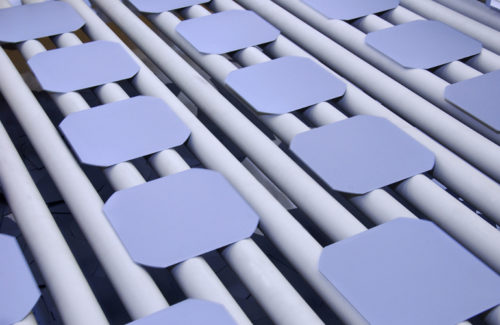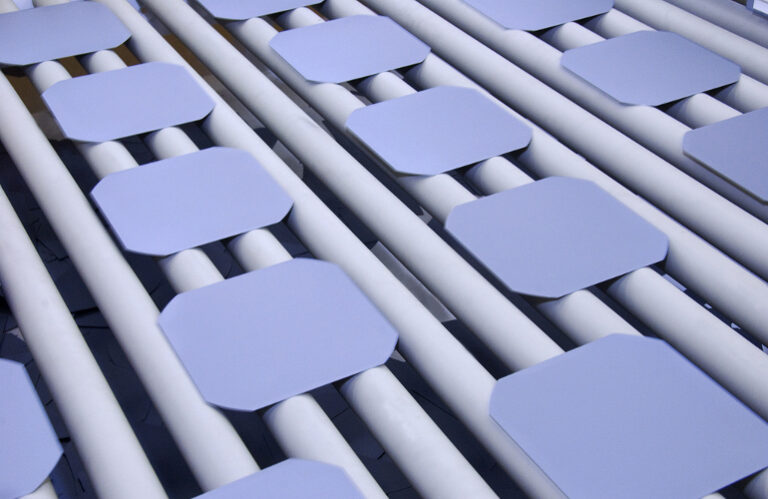In addition to qualifying for various credits established in the Inflation Reduction Act, silicon ingot and wafer manufacturing activities for the solar energy sector can benefit from the 48D Advanced Manufacturing Investment Credit (CHIPS ITC), created in the CHIPS and Science Act. Last lines for the CHIPS ITC were released today by the Ministry of Finance, and while the law is intended to support the general semiconductor market, it does mention solar wafer production.

Waffles come off the line in the former SolarWorld production facility. Archive photo of the Oregon Department of Transportation
The guidelines provide taxpayers with clarity on their domestic investments in semiconductor manufacturing. The CHIPS ITC is generally equal to 25% of the basis of each qualified property that is part of an eligible taxpayer’s advanced manufacturing facility if the qualified property is placed in service after December 31, 2022, and covers construction that takes place after the entry into force of the CHIPS. and Science Act of 9 August 2022.
The final rule clarifies that semiconductor wafer production includes production of wafers used for solar energy generation. The Treasury Department and the IRS, together with the Department of Energy and other agencies, will continue to evaluate additional options to further stimulate domestic production of the entire solar supply chain, including solar wafers.
“Today’s final guidance provides critical certainty for semiconductor and solar manufacturers to make generational investments in communities across the country,” said Lael Brainard, White House National Economic Advisor. “Investments in semiconductors support more than 125,000 jobs and will ensure that the United States leads the world in advanced manufacturing not only for years to come, but for decades to come.”
The production of semiconductor wafers for electronics and solar cells generally follows the same processes. A silicon solar panel first starts out as polysilicon, which is melted and formed into blocks, cut into wafers, doped into cells, and then assembled into strands as a final solar panel.
“The Treasury Department’s final rules will create new opportunities for solar manufacturers and encourage upstream development of the solar supply chain,” said Abigail Ross Hopper, president and CEO of the Solar Energy Industries Association (SEIA ). “Supply chain accessibility and security remains one of our biggest challenges in the U.S. solar and storage industry. While the United States is a global leader in module manufacturing, we do not yet have ingot and wafer facilities in operation, which represents a critical gap in the solar supply chain.”
Currently, Qcells is building the only billet and wafer production line in the United States. Qcells plans to use all wafers produced there in its own solar cells and panels that are assembled in Georgia. In fact, there are no other waffle manufacturing operations under construction in the country. The 25% CHIPS ITC can ensure operations cross the finish line.


